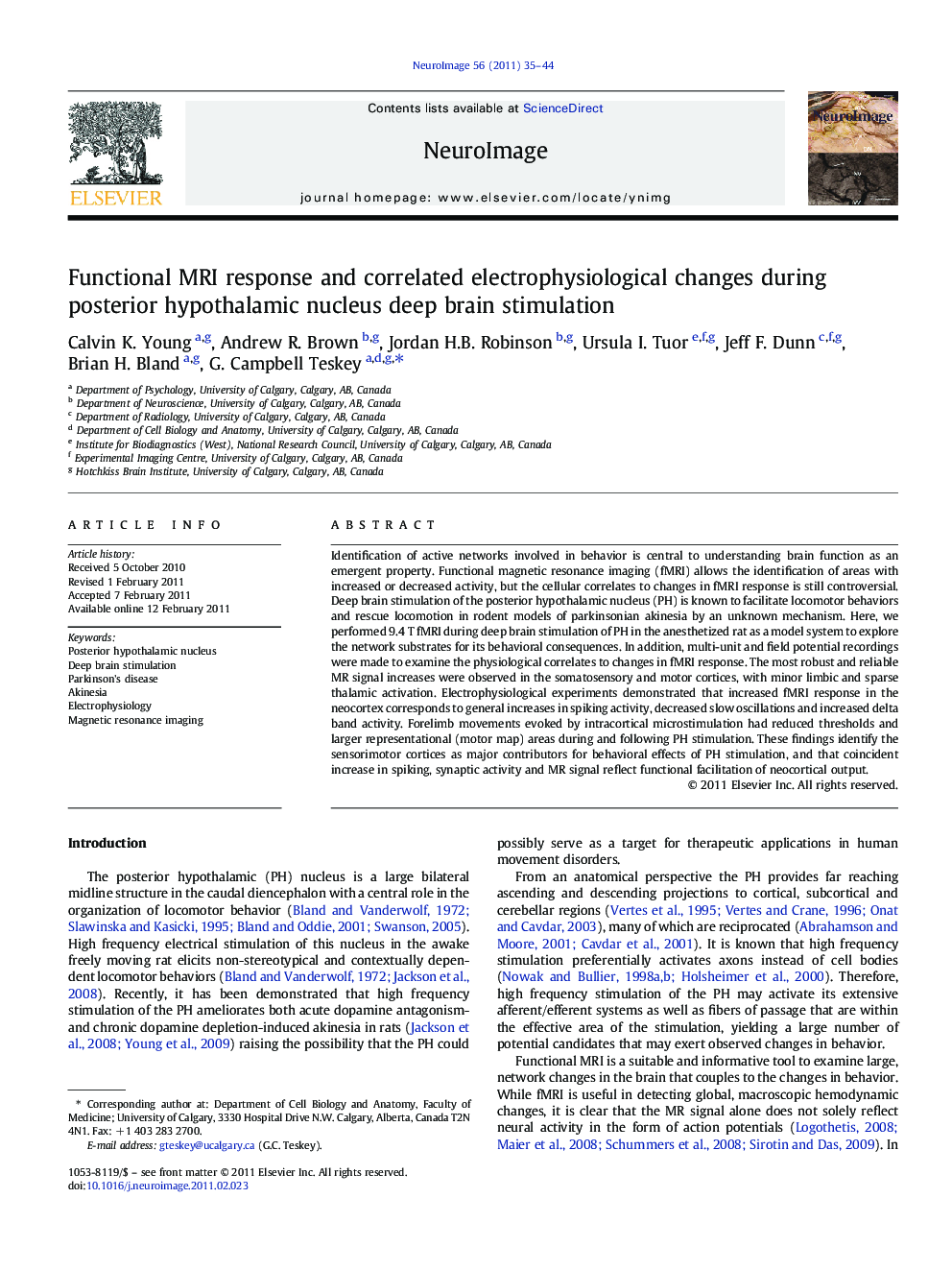| Article ID | Journal | Published Year | Pages | File Type |
|---|---|---|---|---|
| 3072091 | NeuroImage | 2011 | 10 Pages |
Identification of active networks involved in behavior is central to understanding brain function as an emergent property. Functional magnetic resonance imaging (fMRI) allows the identification of areas with increased or decreased activity, but the cellular correlates to changes in fMRI response is still controversial. Deep brain stimulation of the posterior hypothalamic nucleus (PH) is known to facilitate locomotor behaviors and rescue locomotion in rodent models of parkinsonian akinesia by an unknown mechanism. Here, we performed 9.4 T fMRI during deep brain stimulation of PH in the anesthetized rat as a model system to explore the network substrates for its behavioral consequences. In addition, multi-unit and field potential recordings were made to examine the physiological correlates to changes in fMRI response. The most robust and reliable MR signal increases were observed in the somatosensory and motor cortices, with minor limbic and sparse thalamic activation. Electrophysiological experiments demonstrated that increased fMRI response in the neocortex corresponds to general increases in spiking activity, decreased slow oscillations and increased delta band activity. Forelimb movements evoked by intracortical microstimulation had reduced thresholds and larger representational (motor map) areas during and following PH stimulation. These findings identify the sensorimotor cortices as major contributors for behavioral effects of PH stimulation, and that coincident increase in spiking, synaptic activity and MR signal reflect functional facilitation of neocortical output.
Graphical AbstractFigure optionsDownload full-size imageDownload high-quality image (170 K)Download as PowerPoint slideResearch Highlights► The network and neuronal correlates of fMRI signal still need resolving. ► Stimulation of the PH increases fMRI signal in the sensory and motor neocortex. ► Stimulation of the PH increases oscillation frequency and spiking activity. ► Stimulation of the PH decreases ICMS induced forelimb movement thresholds. ► Increased cortical fMRI signal correlates with measures of enhanced excitability.
